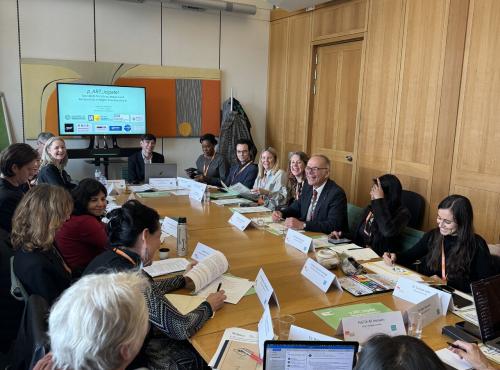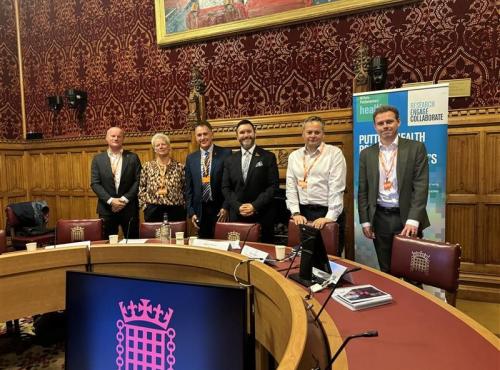Patient choice – on a whim or real need?
Gerald Chan, Head of Public Affairs, Coloplast – a manufacturer of chronic care products in continence, ostomy and wound care.
The Department of Health and Social Care (DHSC) published their White Paper Integration and Innovation: working together to improve health and social care for all (publishing.service.gov.uk) earlier this year outlining how they intend to support the next evolution of the NHS Long Term Plan (LTP) at the policy level. There were no real surprises.
This latest iteration makes good sense – streamlining services, focusing on how the Integrated Care Systems will work to improve patient outcomes, reduce bureaucracy at the systems level and support greater integration between health, social services and local government. While the White Paper outlines the Government’s intention and what it wants to achieve in the implementation of the LTP, much remains to be done at the level of delivery.
Worth noting is the commitment by DHSC to ‘preserve and strengthen patient choice’ in order to improve health and wellbeing and reduce inequalities in the general population. The emphasis on patient choice is to be welcomed but what does it really mean?
Patient rights are protected in the NHS Constitution for England NHS Constitution for England - GOV.UK (www.gov.uk) and like the LTP, there are several versions of this document as it is updated according to the requirements and resources of the time.
At the beginning, it stated that individual patients had the right to choose their healthcare provider, established in the Lansley Reforms. Over time, this right extended to include the treatments made available to them, especially those following discharge from hospital, enabling independence and productivity through better motivation to self-manage their conditions. It was hoped that in the longer term, this would result in empowering the patient and reducing the burden on the NHS.
We know that when the NHS is under financial pressure, CCGs sometimes look at different procurement models to help with spending such as formularies. Limits have been placed on individual choice and patients sometimes perceived that they were being offered an inferior choice that was poorer in quality to the care they received before.
The rationale for this approach of choice restriction is that the local NHS has tough choices to make – if it offers a treatment, there may be an impact on the availability of another due to cost implications. This can sometimes lead to the dreaded postcode lottery where treatments are available in one locality but not in another, resulting in health inequalities. In the case of a urinary catheter for instance, many users would have tried several before settling on the one they believe most suits them.
Now, imagine if you have been using a brand for a period of time and your GP informs you that you can no longer have access to that product and must switch to another, unfamiliar product. You may or may not be provided with the basic training required to use your new product and you now have to just get on with it. This isn’t the caring NHS that we’re proud of.
To an NHS procurement manager with no expertise about catheters, the sheer variety of products that are available may be overwhelming and it would be tempting to find a way to reduce these numbers and curtail patient choice.
Guidelines, pathways, standards are written by expert bodies, NHS managers and clinicians to enable better commissioning so that the most cost-effective treatment are offered. In some cases, the people that use these products have not been consulted on what these changes mean to them. What often results is an over-reliance on technical details and product specifications, leading to the commoditisation of these products.
Ms Jacqueline Emkes, a user of intermittent self catheterisation (ISC), who led a local campaign to get her CCG to reverse their decision to switch ISC users to cheaper catheters said: “Having tried different types of disposable catheters to empty my bladder, I finally settled on the one that works best for me. Imagine my shock when I was told that plans had been made to request all patients to use only one type of catheter with the recommendation that the product should be cleaned and reused.
“I appreciate that CCGs need to make cuts but picking on people who unfortunately have to use catheters seems unfair. Not acknowledging the clear benefits provided by 'convenience' outside the home, enabling people to feel happier in a work or social environment is rather dismissive. It is also a regressive step.
“I totally understand that savings must be made. But please talk to the patients, their doctors and nurses to find solutions. Is this really the correct place to make savings and the correct manner to do so? What the CCGs don’t see is that these cost cutting measures are often a false economy as there are unintended consequences to these decisions including increased urinary tract infections, hospital stays and antibiotic prescriptions among the patient population, not to mention the stress and anxiety caused by poor care.
“I am of course pleased to hear that the Government has made a commitment to patient choice in the White Paper and I look forward to seeing this work. In extraordinarily difficult times, the least we can do is ask patients to collaborate with the NHS.”
Unless you are a user of a particular service or product, you will not have an idea of how transformative such treatment can be to the individual. Such innovation is life enhancing for users, so, for patient choice to work, it requires understanding of patients’ relationships to their treatments.
Photo by Bill Oxford on Unsplash





